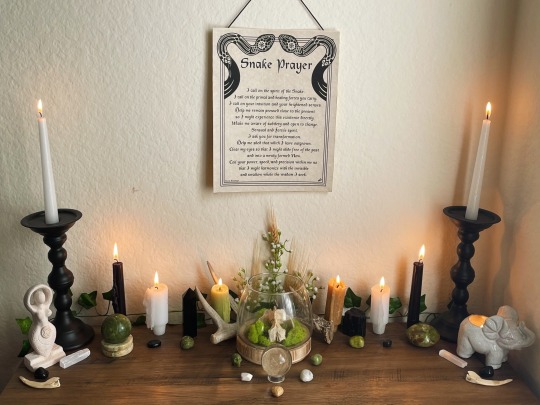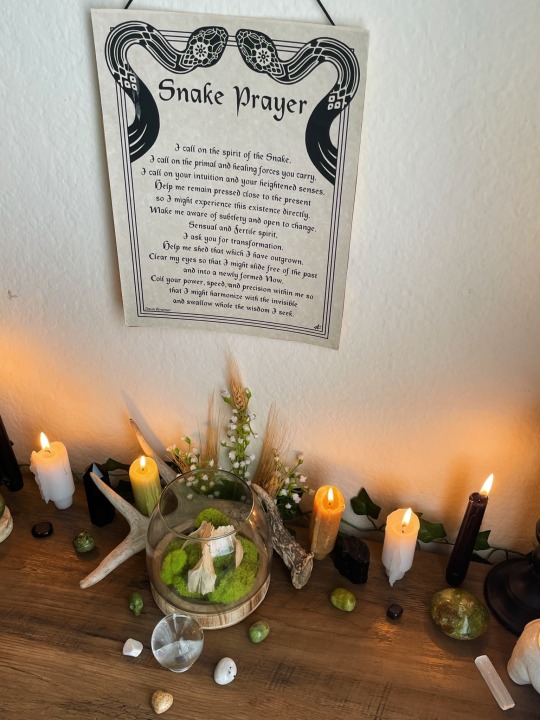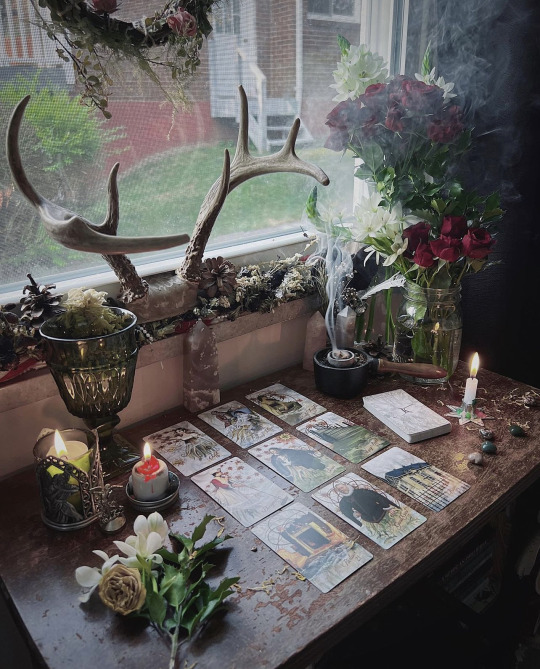Text
The sheer disrespect of the Shrek color scheme

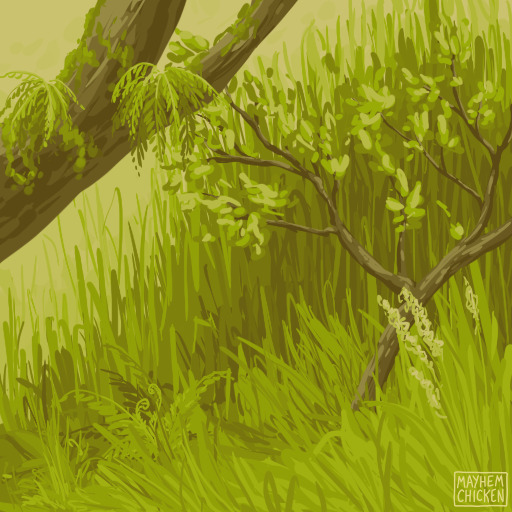
in the hour or so it took me to draw this op turned reblogs off
65K notes
·
View notes
Text
“I want to taste dark water and see crackling trees and wild winds.”
— Egon Schiele (via thatkindofwoman)
14K notes
·
View notes
Text
Day 215: Tincturing Workshop

I’m leading a tincturing workshop this Sunday, so I thought it might be nice to share the packet I’m going to be handing out. It includes some tips on alcohol and vinegar tincturing, as well as recipes and some local Ozark yarbs to work into your herbal preparations. Enjoy!
Recipe Sheet – Tincturing Workshop
Brandon Weston
ozarkhealing.com
facebook.com/MountainManHealing
[email protected]
Alcohol Tinctures
Fresh Herb:
Finely chop or grind clean herb to release juice and expose surface area.
Fill jar 2/3 to ¾ with herb. ~ OR ~ Fill jar ¼ to ½ with roots.
Pour alcohol over the herbs.
Jar should appear full of herb, but herb should move freely when shaken.
Dried Herb:
Use finely cut herbal material.
Fill jar ½ to ¾ with herb ~ OR ~ Fill jar ¼ to 1/3 with roots.
Pour alcohol over the herbs.
Roots will expand by ½ their size when reconstituted!
Alcohol Percentages*
40% – 50% (80-90 proof vodka)
“Standard” percentage range for tinctures.
Good for most dried herbs and fresh herbs that are not juicy.
Good for extraction of water soluble properties.
67.5% – 70% (½ 80 proof vodka + ½ 190 proof grain alcohol)
Extracts most volatile aromatic properties.
Good for fresh high-moisture herbs like lemon balm, berries, and aromatic roots.
The higher alcohol percentage will draw out more of the plant juices.
85% – 95% (190 proof grain alcohol)
Good for gums and resins.
Extracts aromatics and essential oils that are bound in the plant and do not dissipate easily.
The alcohol strength can produce a tincture that is not quite pleasant to take.
Often used for drop dosage medicines.
Will totally dehydrate herbs.
*information comes from the Mountain Rose Herbs blog
Macerating
Maceration is the process by which the active chemical compounds are leached into the solvent solution. This is usually done by shaking the jar that contains the alcohol or vinegar and the herbal plant matter.
Alcohol tinctures need to be left to macerate for at least 2-3 weeks depending upon the ABV. The higher the ABV the less maceration time is needed.
Vinegar tinctures need to be left to macerate for at least a month before straining and bottling.
Easy Alcohol Tincture Recipes
Sarsaparilla Tincture: Anti-Inflammatory, Tonic (do not take if you have kidney problems)
Sarsaparilla root
Vodka
Wild Cherry Tincture: Antispasmodic, expectorant, sedative
Wild cherry bark
Vodka
Herbal Bitters (simplified): Tonic, diaphoretic, colds, flu, febrifuge, chills (contains thujone, may cause drowsiness)
1 quart jar
¼ c. thyme
¼ c. oregano (or dittany)
¼ c. chopped fresh ginger
¼ c. hyssop
1 cinnamon stick
1 tbsp. cloves
Vodka
Stomach Bitters (simplified): Stomach issues, cramps, urinary issues, digestive issues
1 quart jar
4 tbsp dried dandelion root
2 tbsp fennel seed
2 tbsp fresh ginger
2 tbsp dried peppermint leaves (or mountain mint)
Vodka
Vinegar Tinctures
Measurements and instructions are the same as with the alcohol tinctures at the beginning of the packet. Remember: vinegar tinctures need to be left longer to macerate, at least a month.
Easy Vinegar Tincture Recipes
Fire Tonic: Colds, flu, chills, general tonic
1 32 oz. bottle apple cider vinegar. I like to use unfiltered, it seems to taste better and it’s easier on the stomach.
5-10 cloves of garlic, crushed
3-5 hot peppers, as hot as you can stand
1 3 inch knob of ginger, crushed
1 medium onion, peeled and diced
¼ c. chopped mullein
¼ c. chopped rosemary
¼ c. chopped thyme
¼ c. crushed star anise or green sweetgum balls (sources for shikimic acid which helps fight the flu virus)
Take all of this and combine it in large mason jar, all the herbs and vegetables are going to take up a lot of room. Let this stand in a dark place for about two months. Shake everyday. After it’s finished macerating strain off the liquid, add about a half cup honey, bottle.
Alternate Ozark yarbs to use: Dittany, Self-heal, Plantain, Horsemint
Vinegar Oxymels
Also called “sipping vinegars” these mixtures are basic vinegar tinctures sweetened and thickened with honey to make them more palatable.
Basic Oxymel:
1 part herb : 3 parts honey and apple cider vinegar
Quart mason jars: fill up ¼ jar with herb, ¼ with honey, then the rest with vinegar. Macerate for a few weeks.
Easy Oxymel Recipes
Colds and Immune System Oxymel:
1 part elderberries
1 part ginger root (dried)
Another for Colds with Cough Oxymel:
1 part Mullein
1 part Horehound
Stomach Complaints Oxymel:
2 parts ginger
1 part peppermint
1 part fennel seed
Sinus Congestion Oxymel:
2 parts garlic
1 part cayenne pepper
1 part thyme
1 part rosemary
Beginners Ozark Medicinal Plants
Caution should always be taken when looking for medicinal plants out in the wild. Do not consume or use any plant that you are unsure about. The internet is a wonderful resource for plant identification. Look up photos and identification information for plants from reputable sources before collecting any plant out in the wild. NOTE also that many Ozark medicinal plants are endangered and should not be harvested out in the wild.
When wild-harvesting take only what you need at that time. DO NOT STOCKPILE! Chances are the plants will go bad before you can use them. A good rule of thumb for any plant is to count three plants then take one, that way there are plants left behind to go to seed. Leave the roots intact unless the root is being harvested, then try and leave a piece of the root or any seeds/berries behind in the soil.
Responsible harvesting means these medicinal plants will be around for many more generations.
I’m not including photos of plants on purpose! I want folks to go look up the plants and find as many identifying photos and identifying information as they can. Do the work! Google is an amazing resource for plant identification.
+ means the plant is not native but is common in the Ozarks
Black-Eyed Susan, Rudbeckia hirta: Flowers, roots:
Root infusion used for dermatological needs. Used to wash snakebites. Decoction of whole plant taken to aid with heart disease. Decoction of root taken for colds and chills. Cold infusion of flowers taken for headache and as a febrifuge. Similar properties to other coneflowers (Purple coneflower, Missouri coneflower, etc.) Some say the active compounds are not water soluble. Better used as a tincture or extract.
*** Cautions: Asteraceae family ***
Cinquefoil, Five Finger Grass, Potentilla simplex: Leaves, root:
Leaves taken for colds and as a febrifuge. Root astringent, infusion taken for dysentery, diarrhea, and as a mouthwash for sores and thrush.
+Cleavers, Galium aparine: Leaves:
Strong infusion as laxative. Externally as a dermatological aid. Has been linked to aiding with lowering blood pressure.
*** Cautions: Laxative ***
Common Dittany, Cunila origanoides: Leaves, stems, flowers:
Related to Oregano and Marjoram and can be used in similar ways. As an infusion it’s good for colds and to help open up the sinuses. Boiled strong it helps the body sweat and can aid in lowering fevers. Infusion used to help aid a painful birth. Used as a stimulant and tonic. Contains trace amounts of thujone, an active chemical also found in wormwood, mugwort, and yarrow, and may cause drowsiness or headaches. Use only in small amounts and with caution.
*** Cautions: Contains trace amounts of thujone ***
Elderberry, Sambucus nigra or Sambucus canadensis: Berries, flowers, leaves, bark:
Berries used in formulas against chills and cold. Helps support the immune system. Infusion of berry used internally for rheumatism. Flower infusion used as a febrifuge and to sweat out a cold. Leaf infusion used to wash sores and prevent infection. Bark poultice used on sores, wounds, rashes, and other dermatological needs.
*** Cautions: Berries mildly toxic when unripe, foliage toxic in large quantities ***
Goldenrod, Solidago: Leaves, Flowers:
There are many different varieties of goldenrods, all of which have very similar medicinal uses. Topically the plant has traditionally been used in salves to help with sore muscles and arthritis. Internally it has traditionally been used as a diuretic to help bladder and kidney issues and to help break up “stones”. It is also a good diaphoretic that can help reduce a fever, and an astringent that can aid in remedying diarrhea. The flowers also make a wonderful yellow dye.
*** Cautions: Asteraceae family, may cause skin irritation ***
Horsemint, Monarda bradburiana: Leaves, flowers:
Infusion used for colds, chills, as a febrifuge, and for bowel complaints. Can be used externally in oils and salves for dermatological needs. Used in many of the same ways as Monarda fistulosa.
Jewelweed, Impatiens capensis: Leaves, stems, flowers:
Sap produced by the leaves and stems used for poison ivy, rashes, burns, and other dermatological needs. Cold infusion of leaves as a febrifuge. Infusion whole plant taken internally for stomach cramps.
*** Cautions: Seeds toxic ***
+Mullein, Verbascum thapsus: Leaves, flowers, root:
Leaves and flowers can be used to clear chest congestion (smoked or as an infusion), as an analgesic for rashes, aches and pains. Leaves can be wilted and used in poultices for swollen glands. Roots can be used in decoctions for gynecological issues.
+Plantain, Plantago major “Broadleaf Plantain” or Plantago lanceolata “Ribwort Plantain”: Leaves, roots, flowers:
Leaves used in poultices for bug bites, inflammations, rashes, cuts, bruises, stings, and other skin complaints. Whole plant infusions for colds, fever, upper respiratory complaints, rheumatism, hypertension, regulating blood sugar, bladder problems, kidney problems. Root used as a gentle expectorant and in helping sinus issues. “Snake Weed” because of the belief that the plant can help draw venom out of a snakebite. It was also thought that a person could carry the plant to help ward off snakes.
Self-Heal, All Heal, Prunella vulgaris: Leaves, flowers:
Infusion is an analgesic used to wash sores, wounds, and used in salves for many dermatological needs. Used to flavor other medicines. Infusion used as a febrifuge and against colds. Used for sore throats. Mild sedative. Helps with stomach and bowel complaints. Antidiarrheal. Respiratory aid.
Spicebush, Lindera benzoin: Leaves, Bark:
The red berries of the spicebush have long been used as a substitute for cinnamon or allspice in mountain recipes. The leaves can be made into a pleasant infusion for colds and headaches while the bark can be brewed strong for fevers and chills. The leaves can also be used topically for skin irritations, rashes, and bites.
Sumac, Rhus glabra “Smooth Sumac” or Rhus typhina “Staghorn Sumac”: Berries, Leaves, Bark:
The berries are used in a tasty beverage I’ve heard called “sumacade”. It’s lemony taste is quite pleasant, and the drink is high in vitamin C. The berries and bark are astringent and can be used as an effective gargle for a cough or mouth sores. A decoction of the bark can also be taken internally for diarrhea. In the Fall the red leaves can be dried and smoked to induce dreaming.
Sweet Everlasting, Rabbit Tobacco, Pseudognaphalium obtusifolium/Gnaphalium obtusifolium: Leaves, flowers:
Decoction whole plant used as a sedative and to aid sleeping. Analgesic for sores, pains, aches, wounds, and many other dermatological needs. Antirheumatic (internal). Decoction for colds and chills. Smoked and used in infusions to clear chest congestion. Chewed for sore mouth and throat. Used in sweat baths against many illnesses. NOTE harvest leaves in the Fall when they start to turn brown.
*** Cautions: Asteraceae family ***
Sweetgum tree, Liquidambar styraciflua: Leaves, bark, gum, balls:
Leaves can be used in poultices for several dermatological issues, cuts, and bruises. Gum and inner bark used for diarrhea and flux. Infusion of bark taken for “flooding” (gynecological). Infusion of bark given as a sedative. Sweetgum balls, when green in the Spring before seeds have formed can be soaked in alcohol then given for colds and the flu (antiviral, antibacterial due to contained shikimic acid).
White-Leafed Mountain Mint, Pycnanthemum albescens: Leaves, Flowers, Stems:
As an infusion, can be used to help treat headaches, stomach complaints, and colds. Brewed strong it can help to reduce fevers.
Wild Bergamot, Beebalm, Monarda fistulosa: Leaves, flowers:
Infusion used for coughs, colds, and sore throats. Carminative for stomach complaints. Diaphoretic, febrifuge, and diuretic. Mild sedative. Abortifacient, so caution should be taken. Externally an analgesic used in poultices for pains, aches, cuts, and rashes.
Witch Hazel, Hamamelis vernalis (Ozark Witch Hazel) and American Witch Hazel, Hamamelis virginiana: Leaves, bark:
Leaves and bark astringent used externally as a skin toner and for many dermatological issues. Infusion taken for colds and as a febrifuge. Antirheumatic. Decoction of bark taken as an emetic.
*** Cautions: Bark emetic***
+Yarrow, Achillea millefolium: Flowers, leaves:
Leaves astringent, used in bowel complaints and with dermatological needs. Foliage infusion used for colds, as a febrifuge, upset stomach, and as a mild sedative. Leaves can be smoked to loosen phlegm and clear chest congestion.
*** Cautions: Asteraceae family ***
5K notes
·
View notes
Text

The Crow Beneath the Ancient Arch
Hey I should probably actually post here more, huh??
22K notes
·
View notes
Photo

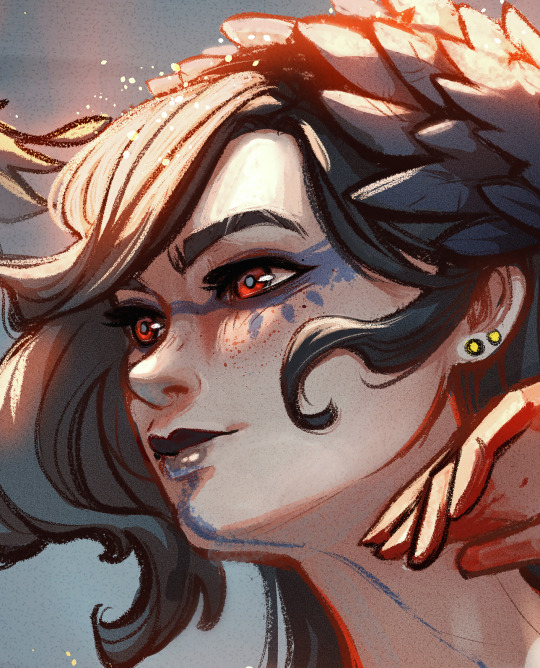
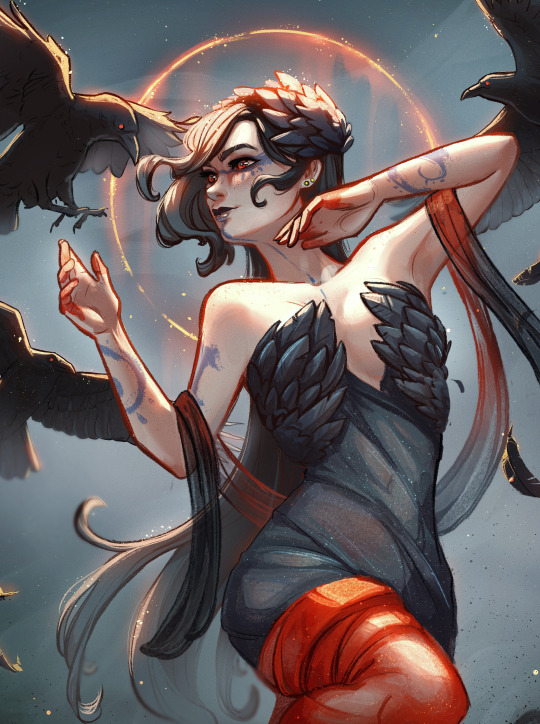
The Morrígan
a figure from Irish Mythology; “phantom queen"
The Morrígan is mainly associated with war and fate, especially with foretelling doom, death, or victory in battle. In this role she often appears as a crow. She incites warriors to battle and can help bring about victory over their enemies
________________
Links
139 notes
·
View notes
Text

Irish mythology : Morrigan - Goddess of war, battle and death
78 notes
·
View notes
Text

The Morrígan (Mór-Ríoghain) from Irish mythology. Ink drawing.
219 notes
·
View notes
Text
I love you silly witchcraft. I love you pop culture deities. I love you arts and crafts magic. I love you action figures on altars. I love you reconnecting with childhood wonder in magic. I love you getting weird with magic. I love you cringe magic.
2K notes
·
View notes
Text
Sea Witches
In the 16th and 17th centuries, the superstition that women on board ships brought bad luck became a hunt for witches. The belief in witches has always been present and sometimes seen as something positive but also negative among sailors. Many a captain resorted to the arts of a witch to buy a badn with wind knots. This was ribbon with three knots woven into it. When the captain needed it, he untied one knot and could call the wind with it, but he had to be careful not to overdo it, because if he untied all three knots at the same time, he would call a storm.

Scandinavian Witches call up a Storm, 1555 (x)
If a Sailor lived with a landlady and refused to pay her rent, whereupon she threw him out, he only had to call her a witch and she got problems, like no more tenants or even worse she had to defend herself in court. But it got particularly bad after 1589 when King James I of England believed that he and his Danish bride Anne had been personally attacked by witches who had conjured up dangerous storms to kill the royal couple during their voyage across the North Sea. Now James had always been a very superstitious man, but the supposed witches stirred up panic.

The North Berwick Witches meet the Devil in the local churchyard, from a contemporary pamphlet, Newes from Scotland, 17th century (x)
One of the first accused in this panic was a woman called Geillis Duncan from Tranent in East Lothian. In late 1590 she was accused by her employer, David Seton, and forced to confess, naming several accomplices. Duncan later retracted her confession, but by then it was too late.
Following an alarming confession by an accused witch, Agnes Sampson, in 1591, King James authorised witch trials. It became known that 200 witches - even some from Denmark - had sailed to the church of the seaside town of North Berwick on Halloween night 1590. There they were instructed by the devil to baptise and drown a black cat in his name. This caused a storm to break out and kill the king and queen. As a result, many women were accused of witchcraft and burned. It was only after the Gunpowder Plot of 1605 - Guy Fawkes’ plan to blow up Parliament and kill the king - that James turned to the Catholics and abandoned the alleged witches.
It was during these 15 years that the rumour began in Scotland that the Spanish Armada had only been defeated in 1588 because Queen Elizabeth had made a pact with the witches from the Isle of Mull, who then caused a great storm that finally destroyed the Armada.

Demolition of the Spanish Armada by José Gartner De La Peña (1892) (x)
Although the witch hunt ended in 1605, the belief in witches was still present and some had to be used as scapegoats. Even though cats were considered companions of witches, ship cats were exempt from this, after all they were considered lucky charms, especially the black ones. But in 1864 it happened to the ship’s cat. Edward Man had to stand trial for incompetence, because he had brought his merchant ship Neptune to Milford Haven instead of London. He told the court that it was not his fault but that of the ship’s cat, which had bewitched him and forced him to do it. The court did not believe him and acquitted the cat, but found Man guilty.
In the course of the 17th century, the belief in witches diminished, but like Sailor, they were superstitious as hell and so they attached so-called hexmarks to important objects on board to prevent the evil forces from bewitching the guns, for example, and thus taking away their accuracy.

A cannon apron with hex marks found in the Queen Anne’s Revenge, before 1718 (x)
The belief that red-haired women were witches also remained, but they were only avoided or spoken to first in order to take away their power and no longer put on the stake. Red-haired men were also said to have certain powers and that you had to be careful when you were near them. In the case of Admiral Lord Cochrane, his seamanship was convincing, even if his private life was a little bumpy. Whether his crews also thought he was a witcher ? in any case, he brought them a lot of prize money.
In the end, the belief in witches had diminished, but was still present until the late 19th century and was tried to be fought with small rituals rather than with brute force.
227 notes
·
View notes
Text
Listen to me: You get good at things by being bad at them. You learn by failing. You gain competency and a sense of mastery by failing at something many times and in many interesting ways.
The sooner you are able to laugh at your own failures, to enjoy the process of messing up, the easier life will be. Because you'll no longer be afraid of learning.
And once you're no longer afraid of failing, you can learn anything.
12K notes
·
View notes
Text

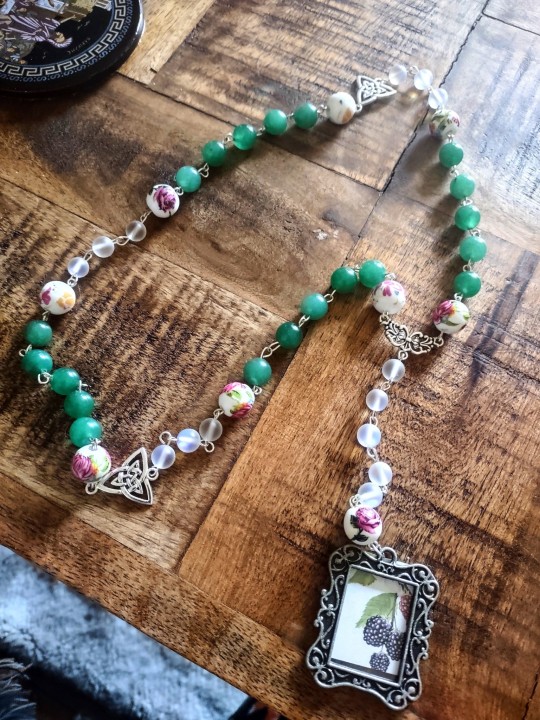
Brigid shrine with offerings and prayer beads
9 notes
·
View notes



